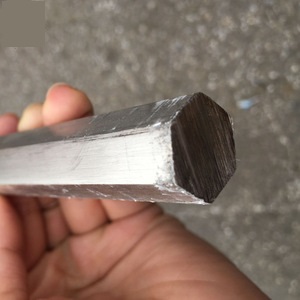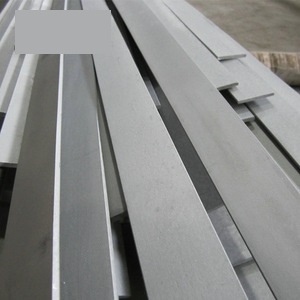316 stainless steel is mainly used in the heat exchangers of pulp and paper equipment, dyeing equipment, film processing equipment, pipelines, materials for exterior materials in coastal areas.
As the shape is different, the field of application is subdivided again.
316 stainless steel round bar

316 is the grade under the American standard. It belongs to stainless steel. Heat resistant. Corrosion resistant steel. It is austenitic stainless steel.
For the national standard is 0Cr17Ni12Mo2. It is better than 304 stainless steel. In seawater and other various media. Corrosion resistance is better than 0Cr19Ni9. Mainly resistant to pitting materials.
Chemical composition:
- C :≤0.08
- Si:≤1.00
- Mn:≤2.00
- S :≤0.030
- P :≤0.035
- Cr:16.00~18.50
- Ni:10.00~14.00
- Mo:2.00~3.00
Mechanical properties:
- Conditional yield strength σ0.2 (MPa): ≥ 205
- Elongation δ5 (%): ≥ 40
- Area shrinkage ψ (%): ≥ 60
- Hardness: ≤187HB; ≤90HRB; ≤200HV
Heat treatment specifications and metallographic organization:
Heat treatment specification : solid solution 1010 ~ 1150 ° C fast cooling.
Metallographic organization : The tissue is characterized by austenite type.
Delivery status:
Usually delivered in the state of heat treatment, the type of heat treatment is indicated in the contract; if not specified, it is delivered according to the state without heat treatment.
How the difference between 316 stainless steel and 304 stainless steel is as follows:
Now the two most commonly used stainless steel 304, 316 (or 1.4308, 1.4408 corresponding to the German / European standard), the main difference between the chemical composition of 316 and 304 is that 316 contains Mo.
It is generally accepted that 316 is more resistant to corrosion and more resistant to corrosion than 304 in high temperature environments. Therefore, in high temperature environments, engineers generally use components of 316 materials.
316 stainless steel hex bar

316 stainless steel hexagonal bar is a widely used steel with good corrosion resistance, heat resistance, low temperature strength and mechanical properties;
Good hot workability such as stamping and bending, no heat treatment hardening.
Can be used in household products (1, 2 tableware, cabinets, indoor pipelines, water heaters, boilers, bathtubs), auto parts (windshield wipers, mufflers, molded products), medical equipment, building materials, chemicals, food industry, agriculture, ship parts And other products.
Material:
SUS201, 202, 301, 303, 304, 304L, 316, 316L, 316F, 321 etc.
Chemical composition
- C≤0.08
- Si≤1.00
- Mn≤2.00
- P≤0.035
- S≤0.03
- Ni: 10.0-14.0
- Cr: 16.0-18.5
- Mo: 2.0-3.0
316 Stainless Steel Square Bar

316 Stainless Steel Square bar is an austenitic chromium nickel steel square bar containing molybdenum which provides superior corrosion resistance and increased strength at elevated temperatures when compared to 304 Stainless.
Widely known as a food grade stainless or marine grade, 316 Stainless is ideally suited for corrosion resistance against a wide range of chemical and acidic corrodents, and marine environment applications.
Typical uses of 316 Stainless includes food production, pharmaceutical equipment, furnace parts, heat exchangers, valves and pumps, chemical equipment, and parts for marine use. Primarily offered in a lower carbon, dual grade 316/316L for increased machinability and added corrosion resistance when welded.
316 Stainless is moderate to weld, cut, form and machine with the proper equipment. Metals Depot stocks a wide size assortment of 316 Stainless Steel Square Bars that you can buy online in ready to ship precut or mill lengths or order just what you need custom cut to size in small or large quantity.
Specification : T316/316L; ASTM A276, A479, A580; AMS 5648 / 5653; QQS-763
Finish : mill finish, slightly grainy to smooth surface, not polished
Mechanical behavior :
Yield Point = 35/30,000 psi
Tensile Strength = 80/75,000 psi
Elongation in 2″ = 60%, Elasticity = 28 ksi
Brinell Hardness = 170/160
Machinabilty Rate = 45%
Chemical composition:
Chrome: 16.00-18.00, Nickel: 10.00-14.00,
Carbon: .08 Max / .03 Max
Manganese: 2.00 Max, Silicon: 1.00 Max.,
Molybdenum: 2.00-3.00
Sizes
316 Stainless Steel Flat Bar

316L stainless steel flat bar is an austenitic chromium-nickel alloy. Its composition includes a high content of nickel and molybdenum, which gives it a higher resistance to corrosion compared to 304 stainless steel. It also has better resistance to pitting and crevice corrosion when placed in environments with chloride. This 316 alloy also has great elevated tensile and stress-rupture and creep strengths. It’s considered having excellent weldability and formability.
The applications commonly used for this alloy include food prep equipment, lab equipment, heat exchangers, boat fittings, condensers, tanks and evaporators. It is commonly used in industries like food, beverage, pharmaceutical, textile, marine and architecture. When placed in atmospheric environments, 316 alloys have a better resistance to corrosion than 304 steel because it has a higher content of chromium and molybdenum. When in temperatures above 122 degrees F and in warm chloride environments, this metal is subject to stress corrosion cracking. However, it is considered to be a marine grade stainless steel because it has great resistance in warm sea water.
316 stainless steels are also resistant to oxidation when being serviced at temperatures up to 1600 degrees F and when continuously serviced at temperatures up to 1700 degrees F. If higher resistance to carbide precipitation is needed, 316L grade steel can be used instead.
All standard fusion methods of welding can be used for this metal, either without or with filler metals. When welding heavier sections of metal, it’s recommended that post-weld annealing is done to maintain max resistance to corrosion. This isn’t a requirement for 316L grades of steel. The temperature for annealing should be between 1900 and 2100 degrees F. Heat treatment cannot be used to harden it.
Thickness
Min: 0.125 Max: 0.75
Length
Max: 144
Width
Min: 0.5 Max: 5
Other (Wall, Etc…)
Min: n/a Max: n/a
Tolerances
Thickness: +/-.008 TO +/-.031 DEPENDING ON THICKNESS AND WIDTH
Width: +/-.015 TO +.093/-.062 DEPENDING ON WIDTH
Length: RANDOM